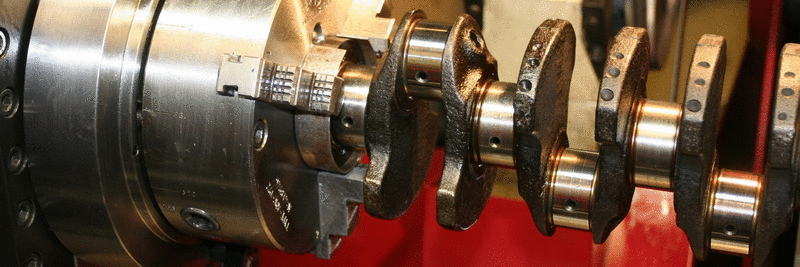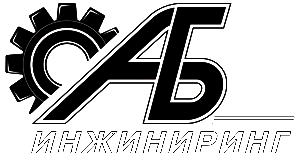|
(Определение параметров газа в резонансных трубах и каналах двигателей с периодическим рабочим циклом методом поршневой аналогии)

Alexander Khrulev
PhD, Senior Researcher, International Motor Bureau
https://orcid.org/0000-0002-6841-9225
DOI: 10.15587/1729-4061.2023.288520
Keywords: pulse jet engine, resonant tube, flow modeling, "liquid" piston method, piston analogy
Abstract
This paper investigates a process of gas flow in the resonant tube of an engine with a periodic workflow. Analysis of various flow models and comparison of known data have shown that the problems of constructing closed 0-dimensional models of the operating cycle for some types of engines remain unresolved. Given this, the question arises about the dimensionality of models of individual engine elements, including the resonant pipe model, which must be included in the general model of the cycle, especially at the initial stage of its development.
To solve the identified problems, a mathematical model of air flow has been improved, built on the basis of an analogy with a '"liquid" piston. Unlike existing ones, the piston analogy model allows one to calculate the instantaneous velocity averaged over the length of the pipe using a numerical solution of the differential equation for velocity.
To test the model built, an alternative finite-difference 1-dimensional gas-dynamic model was selected, with the help of which a test simulation of air flow in a pipe was performed. It has been established that the piston model allows one to find the flow velocity with an accuracy of 5 % for a pressure drop varying according to a sinusoidal law. The permissible limits for changes in the oscillation frequency and pipe length were found, at which the piston model has a minimum error.
Based on the results of the study, it was concluded that with a small mass and inertia of the liquid piston, the proposed model gives results close to those provided by more complex models with higher dimensionality. This indicates the possibility of using a piston model for elements such as pipes as part of a 0-dimensional thermodynamic model of engines with a periodic operating process as an approximate alternative to traditional 1-dimensional flow models.
References
- Gupta, H. N. (2012). Fundamentals of Internal Combustion Engines. PHI Learning Pvt. Ltd., 676.
- Munjal, M. L. (2014). Acoustics of Ducts and Mufflers. John Wiley & Sons, 416.
- Ismail, R. S., Jailani, A., Haron, M. A. (2017). Kadenancy effect, acoustical resonance effect valveless pulse jet engine. AIP Conference Proceedings. doi: https://doi.org/10.1063/1.5002230
- Salih, A. (2016). Method of Characteristics. Available at: https://www.iist.ac.in/sites/default/files/people/IN08026/MoC_0.pdf
- Kim, K.-H., Kong, K.-J. (2021). 1D–3D Coupling for Gas Flow Analysis of the Air-Intake System in a Compression Ignition Engine. Journal of Marine Science and Engineering, 9 (5), 553. doi: https://doi.org/10.3390/jmse9050553
- Onorati, A., Montenegro, G. (2020). 1D and Multi-D Modeling Techniques for IC Engine Simulation. SAE International, 550. doi: https://doi.org/10.4271/9780768099522
- Kumar, S., Prasad, S. S., Krishna, V. (2014). Design of Pulse Jet Engine for UAV. International Journal of Engineering Research & Technology (IJERT), 3 (9), 670–675. Available at: https://www.ijert.org/research/design-of-pulse-jet-engine-for-uav-IJERTV3IS090544.pdf
- Ganesan, V. (2000). Computer Simulation of Compression-Ignition Engine Processes. Universities Press, 523.
- Kalikatzarakisa, M., Coraddua, A., Theotokatosa, G., Oneto, L. (2021). Development of a zero-dimensional model and application on a medium-speed marine four-stoke diesel engine. 3rd International Conference on Modelling and Optimisation of Ship Energy Systems (MOSES2019). Available at: https://www.researchgate.net/publication/352119154_Development_of_a_zero-dimensional_model_and_application_on_a_medium-speed_marine_four-stoke_diesel_engine
- Khrulev, A., Saraiev, O. (2022). Building a mathematical model of the destruction of a connecting rod-piston group in the car engine at hydraulic lock. Eastern-European Journal of Enterprise Technologies, 3 (7 (117)), 40–49. doi: https://doi.org/10.15587/1729-4061.2022.259454
- Khrulev, A. (2023). Analysis of pneumatic catapult launch system parameters, taking into account engine and UAV characteristics. Advanced UAV, 3 (1), 10–24. Available at: https://publish.mersin.edu.tr/index.php/uav/article/view/1045
- Beller, G., Arpad, I., Kiss, J. T., Kocsis, D. (2021). AVL Boost: a powerful tool for research and education. Journal of Physics: Conference Series, 1935 (1), 012015. doi: https://doi.org/10.1088/1742-6596/1935/1/012015
- Cordon, D., Dean, Ch., Steciak, J., Beyerlein, S. (2007). One-Dimensional Engine Modeling and Validation using Ricardo WAVE. Final Report KLK434-B, N07-09. National Institute for Advanced Transportation Technology, University of Idaho. Available at: https://www.academia.edu/18805887/ONE_DIMENSIONAL_ENGINE_MODELING_AND_VALIDATION_USING_RICARDO_WAVE
- Aradhye, O., Bari, S. (2017). Continuously Varying Exhaust Pipe Length and Diameter to Improve the Performance of a Naturally Aspirated SI Engine. ASME 2017 International Mechanical Engineering Congress and Exposition. doi: https://doi.org/10.1115/imece2017-70638
- Borowski, G., Ghazal, O. (2019). Use of Water Injection Technique to Improve the Combustion Efficiency of the Spark-Ignition Engine: A Model Study. Journal of Ecological Engineering, 20 (2), 226–233. doi: https://doi.org/10.12911/22998993/99689
- Magdas, V. B., Mastan, D. C., Burnete, N. (2020). Simulation possibilities of the internal combustion engine management elements using Lotus Engine Simulation software. IOP Conference Series: Materials Science and Engineering, 997 (1), 012121. doi: https://doi.org/10.1088/1757-899x/997/1/012121
- Thompson, B., Yoon, H.-S. (2020). Internal Combustion Engine Modeling Framework in Simulink: Gas Dynamics Modeling. Modelling and Simulation in Engineering, 2020, 1–16. doi: https://doi.org/10.1155/2020/6787408
- Kong, K.-J., Jung, S.-H., Jeong, T.-Y., Koh, D.-K. (2019). 1D-3D coupling algorithm for unsteady gas flow analysis in pipe systems. Journal of Mechanical Science and Technology, 33 (9), 4521–4528. doi: https://doi.org/10.1007/s12206-019-0848-2
- Chiodi, M. (2011). An Innovative 3D-CFD-Approach towards Virtual Development of Internal Combustion Engines. Springer, Wiesbaden, 245. doi: https://doi.org/10.1007/978-3-8348-8131-1
- Mohsen, K. K., Hussain, Z. H. (2021). Numerical Comparison between Two Tailpipe Shapes of Valved Pulsejet Engine. IOP Conference Series: Materials Science and Engineering, 1094 (1), 012001. doi: https://doi.org/10.1088/1757-899x/1094/1/012001
- Melo, A. S. M. (2019). Pulsejet Engine Performance Estimation (Versao Revista Apos Discussao). Covilha, 72. Available at: https://web.archive.org/web/20200709134701/https://ubibliorum.ubi.pt/bitstream/10400.6/8866/1/6820_14614.pdf
- Isac, J. K. R., Mohanraj, L., Sai, E. S., Kannan, V. K. (2014). Numerical simulation of a hydrocarbon fuelled valveless pulsejet. Propulsion and Power Research, 3 (2), 90–95. doi: https://doi.org/10.1016/j.jppr.2014.05.004
- Smajevic, I. (2010). Experimental Study and Computational Modelling of Gas-Fired Pulse Combustion. International Journal of Automotive and Mechanical Engineering, 1, 1–12. doi: https://doi.org/10.15282/ijame.1.2010.1.0001
- Van Heerbeek, P. A. (2008). Mathematical Modelling of a Pulse Combustor of the Helmholtz-type. Delft, 146. Available at: https://diamhomes.ewi.tudelft.nl/~kvuik/numanal/heerbeek_afst.pdf
- Anand, R., Kukar, N., Kumar, V., Nandakumar, K. (2011). Design and realization of a valveless pulsejet engine to demonstrate pulse mode combustion. 25th National Convention of Aerospace Engineering (NCAE 2011). Ranchi.
- Anand, V., Jodele, J., Shaw, V., Russell, A., Prisell, E., Lyrsell, O., Gutmark, E. (2020). Visualization of Valved Pulsejet Combustors and Evidence of Compression Ignition. Flow, Turbulence and Combustion, 106 (3), 901–924. doi: https://doi.org/10.1007/s10494-020-00203-4
- Anand, V., Jodele, J., Prisell, E., Lyrsell, O., Gutmark, E. (2020). Dynamic Features of Internal and External Flowfields of Pulsejet Engines. AIAA Journal, 58 (10), 4204–4211. doi: https://doi.org/10.2514/1.j059685
- Roache, P. J. (1998). Fundamentals of Computational Fluid Dynamics. Hermosa Pub, 648.
- XLfit. Expanding the Power of Excel. Industry standard models built-in with support for designing and sharing your own models. Available at: https://www.idbs.com/xlfit/
- Geng, T., Paxson, D., Zheng, F., Kuznetsov, A., Roberts, W. (2008). Comparison Between Numerically Simulated and Experimentally Measured Flowfield Quantities Behind a Pulsejet. 44th AIAA/ASME/SAE/ASEE Joint Propulsion Conference & Exhibit. doi: https://doi.org/10.2514/6.2008-5046
- Idelchik, I. E. (1966). Handbook of Hydraulic Resistance. Coefficients of Local Resistance and of Friction. Israel Program for Scientific Translations Ltd., 517. Available at: https://www.nrc.gov/docs/ML1220/ML12209A041.pdf
- Biringen, S., Chow, C. (2011). An Introduction to Computational Fluid Mechanics by Example. John Wiley & Sons, Inc. doi: https://doi.org/10.1002/9780470549162
- Pearson, R. J., Bassett, M. D., Fleming, N. P., Rodemann, T. (2002). Lotus Engineering Software – An Approach to Model-Based Design. The 2002 North American ADAMS Conference in Scottsdale. Arizona. Available at: https://ru.scribd.com/document/215011237/Lotus-Paper
- Blackstock, D. T. (2000). Fundamentals of Physical Acoustics. Wiley-Interscience, 560.
- Moussou, P., Testud, Ph., Aure?gan, Y., Hirschberg, A. (2007). An Acoustic Criterion for the Whistling of Orifices in Pipes. ASME 2007 Pressure Vessels and Piping Conference. doi: https://doi.org/10.1115/pvp2007-26157
Другие наши статьи...
|
|
|
|
| Calculation diagram of the piston analogy method (liquid piston): 1 – control volume; 2 – adapter; 3 – resonant tube
|
|
|
| Diagram of a pipe in a one-dimensional flow model
|
|
|
| The flow process in a pipe at a constant pressure drop at p0=1.3 after opening the left end of the pipe: a – velocities at the ends and in the middle of the pipe in comparison with the speed velocity calculated using the piston model; b – distribution of pressure p and temperature T along the length of the pipe at different times (by the number of points in time)
|
|
|
| The speed velocity of air flow in the middle of the pipe when the pressure drop at the inlet changes according to a sinusoidal law: a – with a dimensionless pulsation frequency f=0.29; b – at double frequency f=0.58
|
|









